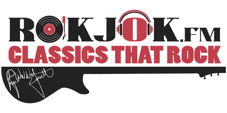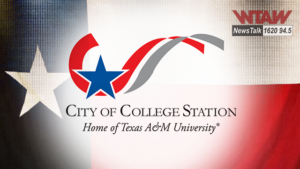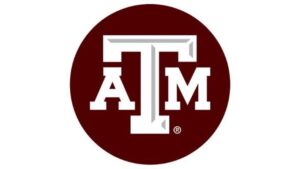Texas A&M Vice President Col. Michael E. Fossum describes NASA astronauts Suni Williams and Butch Wilmore as former military combat pilots who know how to accept a mission — “even the changes that come along the way.”
The two astronauts traveled to the International Space Station (ISS) in June aboard Boeing’s new Starliner spacecraft for what was meant to be a short test mission. More than two months after they were supposed to return to Earth, Williams and Wilmore are still on the ISS due to numerous technical issues and propulsion system malfunctions the Starliner experienced before it managed to dock at the space station.
NASA is expected to announce a decision soon on a return plan — possibly using SpaceX’s Crew Dragon capsule.
Fossum is a former astronaut who was part of the same 1998 NASA astronaut training class as Williams, and met Wilmore when he joined two years later. Watching the news unfold from Earth, Fossum said he’s concerned for his friends’ safety, but is confident NASA will find a solution to safely bring Williams and Wilmore home.
“They’re going to roll with the punches and see what happens,” Fossum said. “My thoughts are really with their families… but both Butch and Suni were military members. Their families are used to dealing with deployments and with NASA. Things happen, the crew is safe right now, and I trust NASA to do the right thing to get them home safely.”
Confident that the mission will be a success, Fossum said his friends are hopefully able to enjoy the extra time they’re getting to spend in space.
“I know them really well, and in a way, I think they were a little disappointed to fly in space with such a short amount of time,” Fossum said. “It’s a big deal to be the first people to crew a brand-new spacecraft. So they’re excited about that, and they both also have done long duration missions on the space station before. They’ve been up there for six months before, and they both loved it, so they were willing to go back.”
Life Aboard The International Space Station
Fossum was commissioned as an officer in the U.S. Air Force after earning a bachelor of science in mechanical engineering from Texas A&M in 1980. He joined the university after retiring from NASA’S Johnson Space Center in 2017, and currently holds the title of Texas A&M vice president, chief operating officer of the Galveston campus, and superintendent of the Texas A&M Maritime Academy.
As a veteran of three space flights who logged more than 194 days in space (including more than 48 hours in seven spacewalks) during his 19 years as an astronaut, Fossum is familiar with what Williams and Wilmore’s days are probably looking like aboard the ISS.
“How does the crew go about shifting their mentality? I think it was actually very quick,” he said. “They’re professionals, and they know there’s a lot of things at play here, and there’s always a lot of work to do on the space station. There’s usually a backlog of these different investigations to do, and we’re typically short-handed with people that can swing a wrench and help install equipment and swap samples in and out of the different experiments up there.”
Astronauts aboard the ISS also act as “guinea pigs” for studying the effects of long-duration spaceflight on the human body, Fossum said, so Williams and Wilmore are undoubtedly contributing to that scientific mission. He describes them as “gym rats” committed to maintaining their health who are probably making full use of the exercise equipment on the ISS so they don’t lose bone or muscle mass. As two experienced astronauts who know the importance of regular exercise, he doubts they’ll return to Earth with any significant changes to their bodies.
As for supplies, the ISS always has a reserve of food, oxygen and other items to handle the crew’s unexpectedly long stay. And astronauts don’t go through many clothes, Fossum points out. The ISS stays around 70 to 72 degrees with very low humidity, so astronauts don’t work up much of a sweat unless they’re exercising.
“You change into exercise clothes, and those do get soaked with sweat because it doesn’t fall off. It clings to you,” he said. “It’s a very odd thing when you first see it. We don’t have a washing machine up there either, so you really wear clothes until it’s time to throw them away.”
Return To Earth
Fossum said the goal now is to complete the mission safely.
“I’m sure that Suni and Butch are getting filled in on the details. There’s constant meetings, and I feel very confident they’re talking to administrators and the NASA leaders within the space station program,” he said. “This was a test mission, but sometimes in tests, the answer is, you’ve got something you need to fix. Tests don’t always prove that everything worked perfectly, and that’s the case here.”
Until NASA works out the astronauts’ ride home, Fossum said he hopes his friends are taking advantage of their extra time in space.
“I know how much you’ve loved your previous missions to the space station. You enjoy it,” he said. “I look forward to seeing you safe back on the ground whenever you get home.”
By Texas A&M University Division of Marketing and Communications




